| Columns Retired Columns & Blogs |
...no longer "here"!
https://www.stereophile.com/%20content/devore-fidelity-orangutan-o96-loudspeaker-jim-austin-september-2017
I performed the measurements of the Mastersound Compact 845 amplifier with my Audio Precision SYS2722 system. The tubes were installed when I received the review sample, and I waited for an hour after powering up the amplifier before starting the testing. The Mastersound runs hot—after an hour the temperature of the top panel in front of the line-stage tubes was 115.9°F/46.6°C.
The Compact 845 inverted polarity from both the 4 ohm and 8 ohm output transformer taps with the balanced and single-ended inputs but preserved absolute polarity from its Direct inputs, which bypass the preamplifier stage and volume control. The voltage gain at 1kHz from the unbalanced Direct inputs was 23.1dB from the 8 ohm tap and 20.7dB from the 4 ohm tap, both figures into 8 ohms. From the regular inputs, the gain into 8 ohms from the 8 ohm tap with the volume control set to its maximum was 32dB, balanced, and 36.55dB, unbalanced. The maximum gains from the 4 ohm tap were both 2.3dB lower.
The input impedance is specified as a high 50k ohms. For the single-ended Direct input, I measured 33k ohms at 20Hz and 1kHz, and 28.6k ohms at 20kHz. The normal unbalanced input's impedance varied from a high 71k ohms at 20Hz to 52.6k ohms at 20kHz; the balanced input impedance was much lower, at 3230 ohms across the audioband.
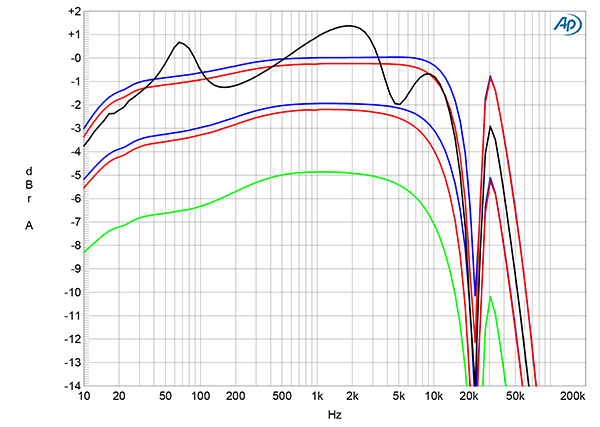
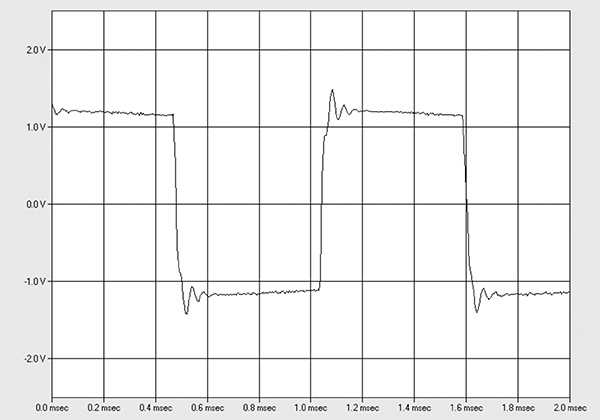
The source impedance from the 8 ohm output tap was a high 3.5 ohms at 20Hz, 2.6 ohms at 1kHz, and 7.3 ohms at 20kHz. The variation in the small-signal frequency response with this output with our standard simulated loudspeaker (fig.1, gray trace) was therefore moderately high, at ±1.7dB. The 4 ohm tap's source impedance was lower, at 1.7 ohms at 20Hz, 1.3 ohms at 1kHz, and 3.15 ohms at 20kHz, which meant that the response variation with the simulated speaker was lower, at ±1dB. However, there will be audible modifictions of loudspeaker responses with both output taps. Into resistive loads (fig.1, blue, red, cyan, magenta, and green traces), the Mastersound amplifier's 8 ohm output shelved down below 40Hz and rolled off above 10kHz, reaching –3dB at 18kHz. A sharply defined response peak at 30kHz correlates with overshoot and ringing in the amplifier's reproduction of a 1kHz squarewave into 8 ohms (fig.2). This peak was higher in amplitude with higher load impedances and from the 4 ohm output transformer tap.
Fig.1 was taken with the volume control set to its maximum; the left channel is 0.26dB higher in level at 1kHz than the right. This difference increased to 0.46dB when I repeated the measurement with the volume control set to –20dB, though the response was otherwise identical.
Something I noticed while doing these tests was that the Compact 845 emitted audible sounds (above), which seemed to be coming from the output tube circuitry rather than the transformers. While the level wasn't very high—the spl in front of the amplifier was 66dB(C), slow ballistics, with the amplifier driving 1kHz at 1Wpc into 8 ohms—it was still readily audible and was not masked by the NPR news playing on a nearby portable radio in the test lab.
The Compact 845's channel separation (not shown) was relatively poor, at 50dB in both directions below 1kHz, decreasing to 30dB at the top of the audioband. I monitored the waveform on an oscilloscope when I performed this measurement, which indicated that I was measuring true crosstalk rather than noise. The Mastersound amplifier's output had a relatively low level of noise. The unweighted, wideband signal/noise ratio (ref. 1W into 8 ohms), taken from the 8 ohm taps with the inputs shorted to ground and the volume control set to its maximum, was 67.6dB (average of the two channels). This ratio improved slightly to 68.5dB when the measurement bandwidth was restricted to 22Hz–22kHz, and to 78.9dB when A-weighted. With their lower gain, the ratios from the 4 ohm outputs were 2dB greater.
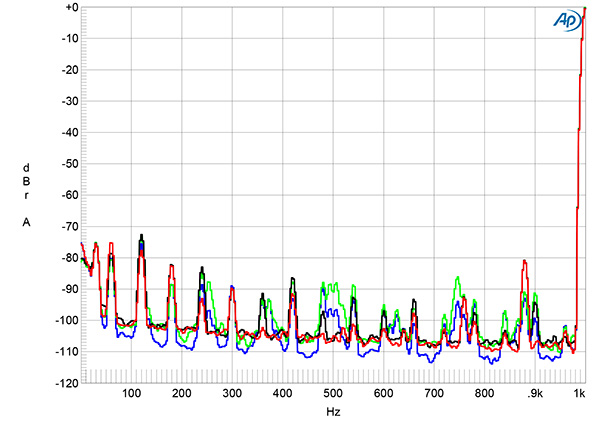
Spectral analysis of the low-frequency noisefloor while the Mastersound's 8 ohm taps drove a 1kHz tone at 1Wpc into 8 ohms with the volume control set to the maximum (fig.3, left channel green, right gray) revealed a low level of random noise. However, AC supply–related spuriae at 60Hz and its odd- and even-order harmonics were present, and their levels didn't change when I experimented with the grounding between the amplifier and the Audio Precision analyzer. The highest of these spuriae, at 120Hz, lay at –73dB (0.02%). Repeating the analysis with the volume control set to –20dB (blue, red traces) lowered the levels of the power supply–related spuriae by up to 6dB, but the random noisefloor's level didn't change.
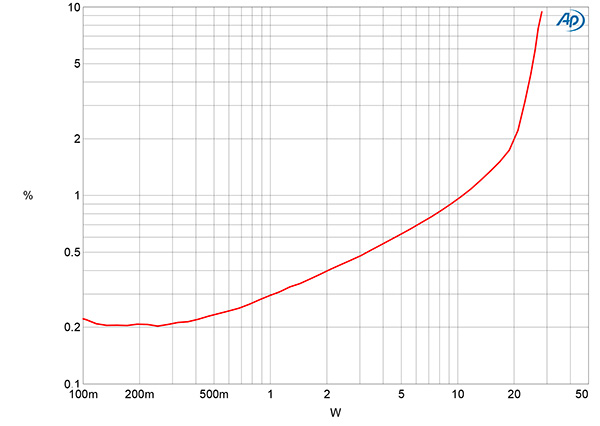
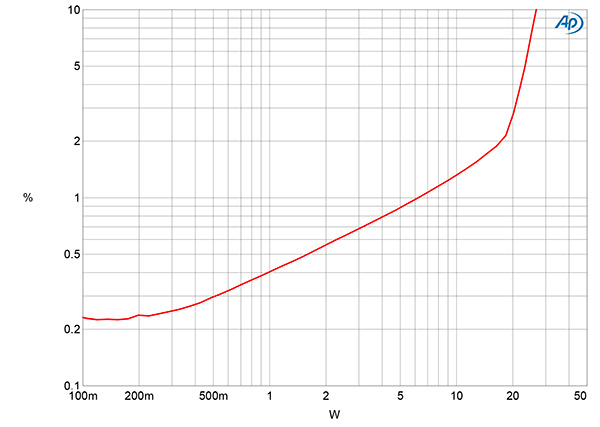
Mastersound specifies the Compact 845's maximum power as 30W, which is equivalent to 14.76dBW into 8 ohms and 11.76dBW into 4 ohms. According to Stereophile's usual definition of clipping, when THD+N reaches 1%, the amplifier didn't get close to that power. With both channels driven, I measured a clipping power of 11.5Wpc from the 8 ohm tap into 8 ohms (10.6dBW, fig.4) and 6.9Wpc from the 4 ohm tap into 4 ohms (5.4dBW, fig.5). Raising the clipping limit to 3% THD+N, I measured 22Wpc with each output tap matched to the load. At 10% THD+N, the Compact 845 approaches its specified power.
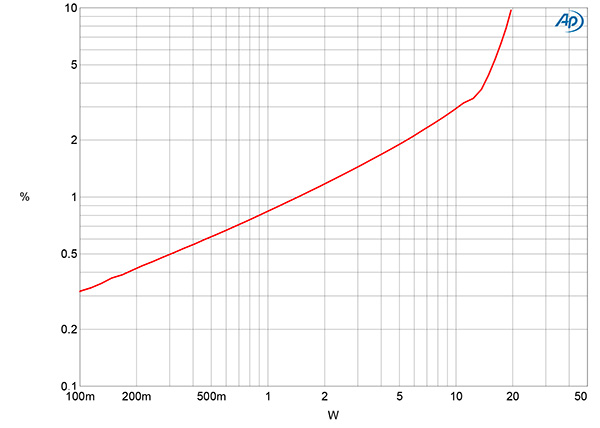
Tube amplifiers usually have less distortion when the load impedance is greater than the nominal output transformer impedance. As revealed in fig.6, which plots the THD+N percentage against output power with the 4 ohm tap driving 8 ohms, the Mastersound's THD+N was higher with a larger load impedance, not lower. At 3% THD+N, the 4 ohm tap was putting out 10Wpc into 8 ohms.
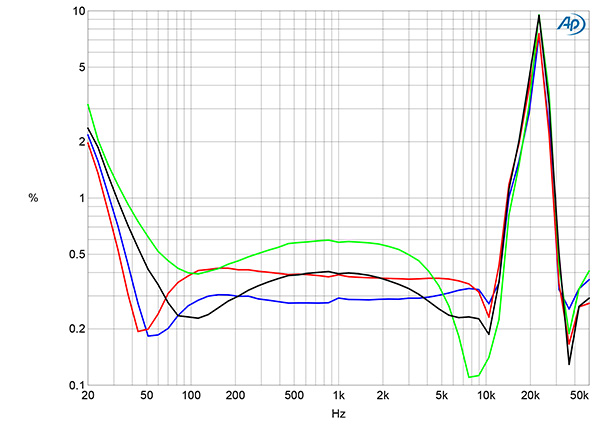
Fig.7 shows how the percentage of THD+N in both channels varied with frequency, with the 8 ohm tap driving 8 and 4 ohms at 4.9V, which is equivalent to 3W into 8 ohms and 6W into 4 ohms. The huge rise in distortion above 10kHz may well be due to the high-frequency rolloff in this region and, perhaps, to the fact that the distortion is being magnified by the output transformer resonance seen in fig.1. The THD+N rose slightly at low frequencies and was higher into 4 ohms (green and gray traces) than it was into 8 ohms (blue and red traces). At the same voltage from the 4 ohm tap (not shown), the distortion in the midrange and treble was close to 0.6% into 4 ohms and 1% into 8 ohms.
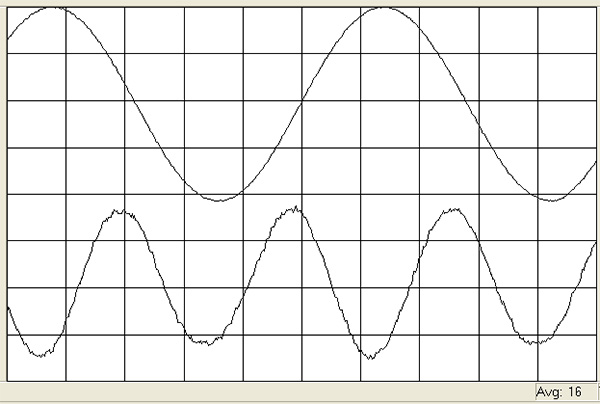
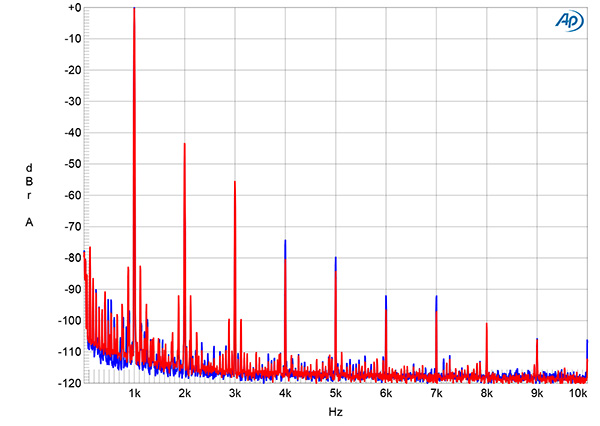

Fortunately, as fig.8 shows, the distortion was predominantly the (arguably innocuous) second harmonic, with higher-order harmonics progressively lower in level (fig.9). However, at low frequencies (fig.10), the level of the third harmonic was the same as the second, perhaps indicating the onset of core saturation in the output transformers.
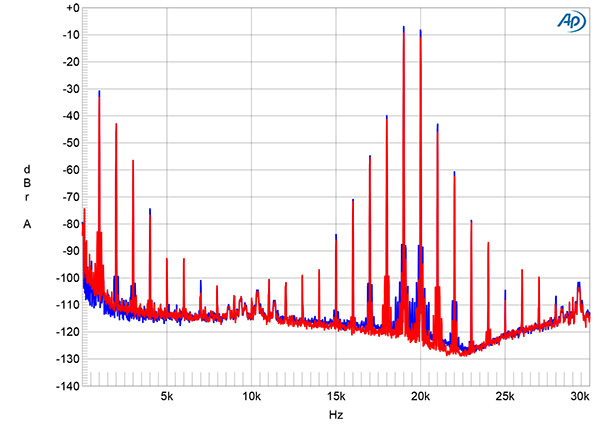
Due to the masking, the level of the second harmonic may not result in audible distortion with music, as long as it is not accompanied by intermodulation distortion. With the Compact 845's 8 ohm taps driving an equal mix of 19 and 20kHz tones at 3Wpc peak into 8 ohms (fig.11), the 1kHz difference product lay at –30dB (0.3%), and many higher-order intermodulation products were present. This behavior correlates with the increase in THD+N in the top audio octave seen in fig.7. The amplifier may well sound better than this test suggests, since top-octave energy level is typically lower in music than in test tones. However, this information is presented here, as it is with every review, since we standardized on this intermodulation test when we started measuring amplifiers three decades ago.
Other than the differences caused by different output tubes—the 845 tube is capable of putting out more power than the 300B—these results are very similar to those measured in the Mastersound 300 B S.E. integrated amplifier, which Art Dudley reviewed in March 2008. The high levels of distortion and the high source impedances will be due to the single-ended triode topology and the decision not to use loop negative feedback. I concluded my discussion of the 300 B S.E. measurements by asking whether the reviewer liked the amplifier because of what it did right despite what it did wrong, or because of what it did wrong. In 2008, I didn't have an answer to that question. I still don't.—John Atkinson

...no longer "here"!
https://www.stereophile.com/%20content/devore-fidelity-orangutan-o96-loudspeaker-jim-austin-september-2017

I enjoyed this review. But I'm always curious about how the review aligns to the measurements.
I've read through the final two paragraphs of the Measurements section of some of the more recent tube amps/integrated amps. Whereas the measurements for solid state amps often will conclude that this piece of equipment is "well engineered", the Measurements section for tube amps often has a statement along the lines of, "...the amp performs along the lines of what one would expect for a tube amp with zero negative feedback..."
The commentary always seems to imply that there are negative sonic consequences to these amplifier designs that are not commented upon by the reviewer of the equipment that a buyer should be wary of. It is as if Stereophile has two minds about tube designs. I did not find any reviews of tube electronics without this dichotomy.
I'll admit that I do not understand the testing section - I don't have a background to understand the tests and the interpretation of the graphs - If Stereophile has a lay-person's guide to the Measurements section and could make it available on-line, that would be helpful!. But I do read the last couple of paragraphs summarizing the Measurements as I am curious to see how the measurements align to the review. I find it interesting.
I have two amps - one solid state, and one tube. I enjoy them both.

I just want to make it clear that the opinion expressed by JA1 here, though very well-supported, is not universally shared.
It's true--no one connected with reality can deny it--that certain features in old-school tube amps cause departures from neutrality, especially with loudspeakers with impedance curves that drop below, let us say, 4 ohms, which is most modern loudspeakers. No one can deny it because they are measurable at clearly audible levels. But there's another school of thought--embraced by certain other Stereophile writers--that believes that something less tangible is retained in some such amplifiers that is lost in demonstrably more accurate ones. Such opinions are based on subjective experience--self-perceived connection with the music. This makes them literally irrefutable--they cannot be tested objectively, so they cannot be contradicted, which is annoying--yet (and this is my opinion, as the magazine's editor), in a magazine committed to subjective experience--to listening--above all else, such opinions must not be dismissed out of hand.
Edit: I thought I should add that the opinions/beliefs I'm referring to are held by many of the most experienced, devoted, passionate audiophiles. I do not take that lightly.
Jim Austin, Editor
Stereophile

Thanks, Jim.
I agree: While "picky" and no surefire thing, good SET amps can be musically magical.
To quote Art Dudley (who felt SET could be something very special indeed (obviously, despite some drawbacks)):
"The fact is, there's an archetypal high-end audio sound and an archetypal SET sound. At its best, high-end audio sound is impressively open and clear, with deep bass, shimmering highs, and a flair for thrilling spatial effects; at its worst, it's lifeless, boring, constricted, undramatic, uninvolving, and incapable of any suggestion of flow in the music.
At its best, SET sound has the kind of punch and drama that can startle you out of your pants—plus real musical drive, momentum, presence, and tone; at its worst, it has no bass, no treble, and a level of coloration and sheer fuzz that could drive you out of the house after just a few songs." *
And:
"(Single-ended typically convey) An almost scary sense of presence on voices and solo instruments. Superb immediacy in terms of musical nuance. Equally superb drama, with the greatest dynamic contrasts available in home playback when mated to the right speakers. At least good to very good performance in terms of getting the notes and the beats right. A sense of flow and momentum in musical lines that is second to none. And an uncannily natural way with textures and colors—that beguilingly beautiful, gooshy feel that makes it easy to forget you're listening to electricity imitate people playing music." **
*https://www.stereophile.com/artdudleylistening/1107listen/index.html
**https://www.stereophile.com/content/listening-25-page-2

Are you Lars Bo the musician? I suspect that this is a fairly common Danish name.
I've noticed an interesting phenomenon: These comment threads are carefully monitored by denizens of a certain hi-fi discussion site. Whenever I write anything here, especially if it seems to contradict one of our reviewers, my comment is copied and posted on that other website and potshots are taken. Many of the posts are ignorant and poorly informed. Almost all are ungenerous. A few are intelligent enough but lack wisdom. I thought I'd write a little bit more and see if the new information provided here is conveyed.
I have no tubes in my main system. When I wrote what I wrote above, in my reply to JA1, I was not describing myself but others whose views I respect. I'm not a tube guy. My main reason is that tubes are unreliable, which undermines my confidence in my system: Do I have a tube going bad, or is it something I ate?
There are many passionate audiophiles--again, not me--who have been on a lifelong journey seeking the best sound--the most musically expressive, humanly communicative sound. They are like artists, or, at a minimum, seriously engaged art lovers, people for whom music is daily sustenance. They relate to their music (and musicians), via their hi-fi systems, in a deeply human way. A lifetime of listening has made them astute observers, far beyond what most of us, who dabble in a hobby and limit our thinking to DBTs, will ever achieve.
When they say there's something going on beyond second-order distortion and output-impedance-induced deviations from neutrality, I take that seriously. To repeat: This is worthy of respect.
In serious pursuit of a musical connection, some may choose to limit themselves to verifiable fact--to approach the reproduction of recorded music as if it were an intellectual exercise. Others treat it as an art form--one they are deeply committed to. In pursuit of connection to music, each approach has merit.
Jim Austin, Editor
Stereophile

Hi Jim,
Yes, Lars Bo is not an uncommon name in Denmark (either as a given or full name). I do play various instruments, though only for my pleasure for many years. But I spend way more time listening to and engaging in playback music (mostly as an art form you describe so well).
I agree with you: I have many friends whose approach and gratification in hi-fi are somewhat different than my own. Once in a while, some may even not like Bourgogne... We can discuss our "paradigms" and preferences passionately, but genuine interest in and respect for each other's perspectives make all the difference.

JA what's with the Mars attack test sweep tones automatically played in the background when the measurements page on this amp is first opened up?? Or is it the new audible intro to say we're now in measurement mode?
Cheers George

Yes, JA1, the Mars Attack of whistling not dixie autoplays for me, too. I'm using Chrome on Win10.

...on Chrome browser on Android.

Safari 16.4.1: File does not appear on the Measurements page at all (!)
Brave Version 1.51.110 Chromium: 113.0.5672.77 (Official Build) (arm64): File autoplays and its controls do not display properly.
Firefox 113.0 (64-bit): File played only when Play button was clicked.

You are welcome, and thanks for letting us know that the code has been fixed.

It's kinda good, like having Sheldon Cooper intro you into the believable section of Stereophile.
To have this when you open up measurements page, reminds you that your now leaving the subjective and entering the objective part of the review.
BTW mines Chrome also on Win 10.
Cheers George

I liked it, an audible que that you were now entering into the realm of reality/truth, without any subjective fairy tales to sway you.
I say bring it back JA!
Cheers George